Related Research Articles

Nanzhao, also spelled Nanchao or Nan Chao, was a kingdom that flourished in what is now southern China and Southeast Asia during the 8th and 9th centuries. It was centered on present-day Yunnan in China.
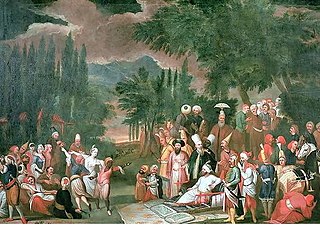
The Türgesh, Turgish or Türgish were a Turkic tribal confederation of Dulu Turks believed to have descended from the Turuhe tribe situated along the banks of the Tuul River. They emerged as an independent power after the demise of the Western Turkic Khaganate and established a khaganate in 699. The Turgesh Khaganate lasted until 766 when the Karluks defeated them. Turgesh and Göktürks were related through marriage.

The Four Garrisons of Anxi were Chinese military garrisons installed by the Tang dynasty between 648 and 658. They were stationed at the Indo-European city-states of Qiuci (Kucha), Yutian (Hotan), Shule (Kashgar) and Yanqi (Karashahr). The Protectorate General to Pacify the West was headquartered in Qiuci.
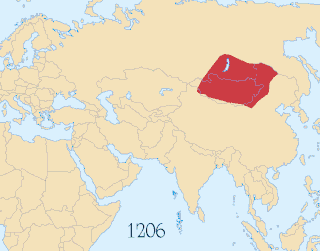
This is the timeline of the Mongol Empire from the birth of Temüjin, later Genghis Khan, to the ascension of Kublai Khan as emperor of the Yuan dynasty in 1271, though the title of Khagan continued to be used by the Yuan rulers into the Northern Yuan dynasty, a far less powerful successor entity, until 1634.
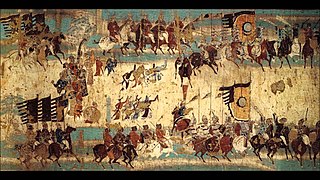
The Beiting Protectorate-General, initially the Beiting Protectorate, was a Tang dynasty protectorate created in 702 to control the Beiting region north of Gaochang in contemporary Xinjiang. Wu Zetian set up the Beiting Protectorate in Ting Prefecture and granted it governorship over Yi Prefecture (Hami) and Xi Prefecture (Gaochang). The Beiting Protectorate ended in 790 when Tingzhou was conquered by the Tibetan Empire. In 2014 the Beiting city ruins were designated a part of the Silk Road UNESCO World Heritage Sites.

This is a timeline of the Tang dynasty, which covers a period of roughly 289 years, from 618, when the dynasty was founded, to 907, when the last Tang emperor was deposed by the warlord Zhu Wen, who established the Later Liang dynasty, inaugurating the period of Five Dynasties and Ten Kingdoms. Information on areas and events relevant to the Tang dynasty such as the Wu interregnum, when Wu Zetian established her own Zhou dynasty, and other realms such as the Sui dynasty, Tibetan Empire, Three Kingdoms of Korea, Nanzhao, Japan and steppe nomads are also included where necessary.
The Siege of Lüshun was a military conflict between the Later Jin and Ming dynasty. In the summer of 1634 the Jin attacked and conquered the port city of Lüshun from Ming.
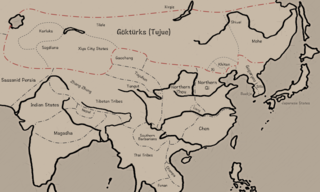
This is a timeline of the Göktürks from the origins of the Turkic Khaganate to the end of the Second Turkic Khaganate.
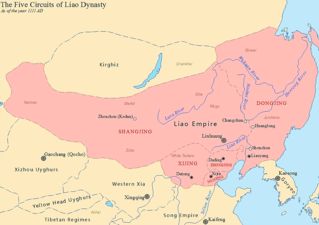
This is a timeline of the Khitans.
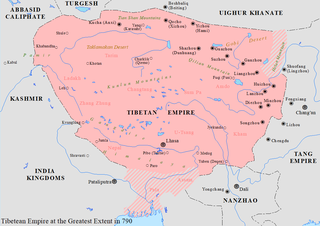
This is a timeline of the Tibetan Empire

This is a timeline of the Karluks.

This is a timeline of the Jurchens.
This is a timeline of the Five Dynasties and Ten Kingdoms.
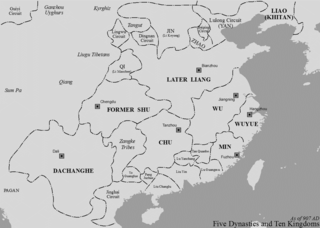
This is a timeline of the Tangut people and Western Xia.

This is a timeline of Mongols prior to the Mongol Empire.
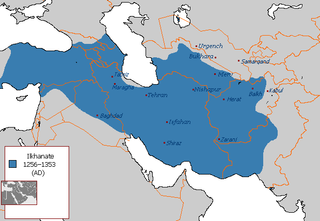
This is a timeline of the Ilkhanate.

This is a timeline of the Chagatai Khanate (1226–1348) and its successor states, Moghulistan (1347–1462), Yarkent Khanate (1514–1696), and the Turpan Khanate (1462–1680).
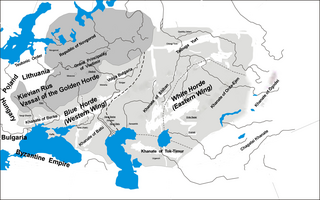
This is a timeline of the Golden Horde.

The Jurchen unification was a series of events in the late 16th and early 17th centuries that led to the unification of the Jurchens under Nurhaci.

This is a timeline of the Xinjiang under the rule of the Qing dynasty.
References
- 1 2 Bregel 2003, p. 16.
- ↑ Wang 2013, p. 158.
- ↑ Yu. Zuev, "Early Türks: Essays on history and ideology", Almaty, Daik-Press, 2002, p. 207, 209, 239, ISBN 9985-4-4152-9
- ↑ Golden 1992, p. 139.
- 1 2 3 4 5 6 Bregel 2003, p. 18.
- ↑ Beckwith 1987, p. 88-89.
- 1 2 3 Golden 1992, p. 140.
- 1 2 Asimov 1998, p. 25.
- ↑ Shaban 1979, p. 113.
- ↑ Bregel 2003, p. 19.
- 1 2 Golden 1992, p. 141.
- ↑ Asimov 1998, p. 31.
- ↑ Asimov 1998, p. 33.